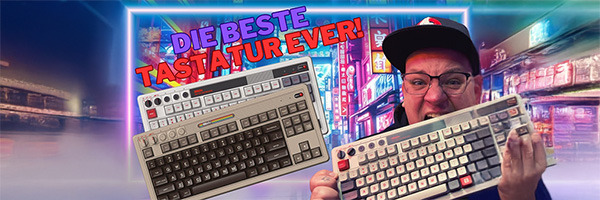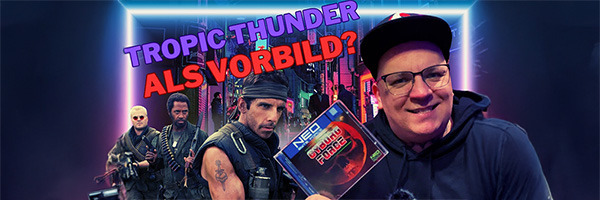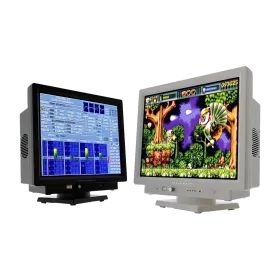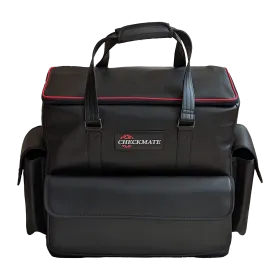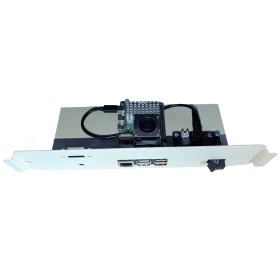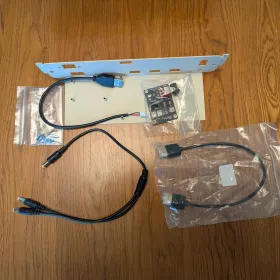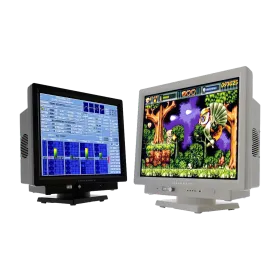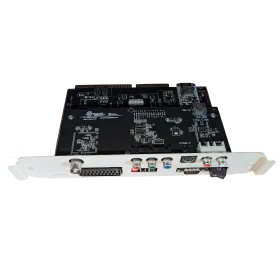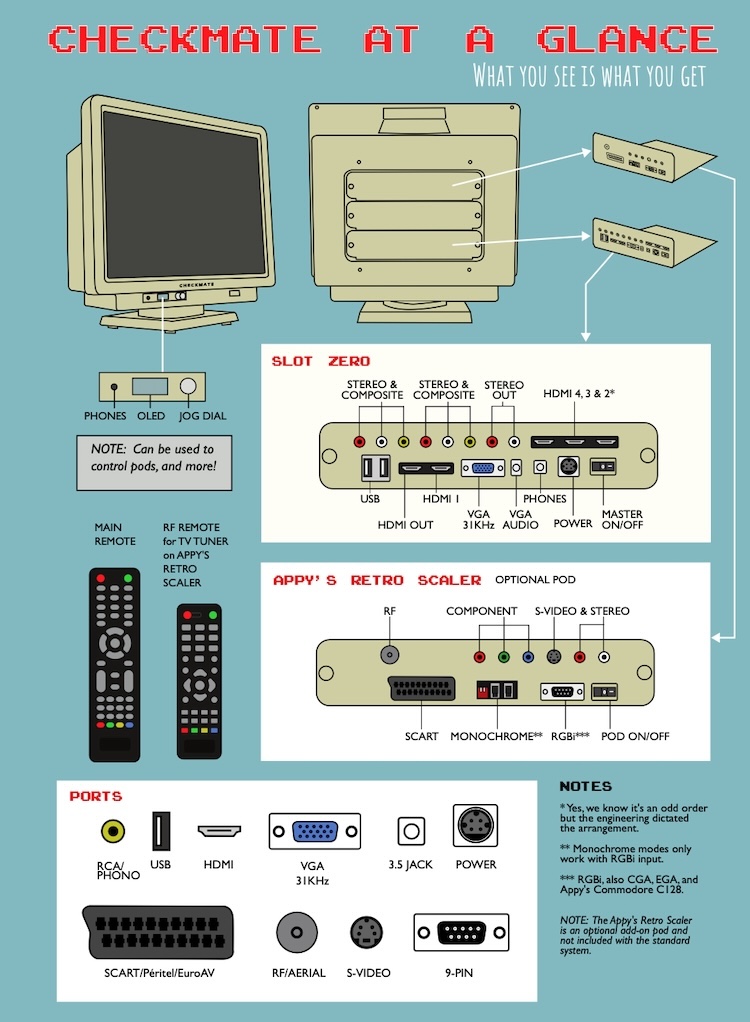Checkmate Retro Monitor
Checkmate IPS Retro Monitor - Overview
Welcome to the Checkmate IPS Retro Monitor, a hand built, customisable display. A user friendly classic that meets your needs both now and in the future. What the team built here is less of a standalone monitor and more of a custom, modular display platform to take us all into the future of retro computing and gaming.
Or as we say, “Yesterday’s Technology Tomorrow”.
This is not like, say, buying a car off the lot; this is more like having your ultimate daydream classic car built for you, containing all the features you want, electric motor, Bluetooth, CarPlay and Sat Nav, all built in, but looking like a restored classic.
It’s a beautifully designed and built base on which to build your own bespoke, future proof display based on what you need. And it’s flexible and upgradable enough for it to last you a lifetime.
There are 6 products.
Out-of-Stock
The ultimate Retro Monitor, offering almost any inputs for classic consoles and computers you can imagine. Choose between white or black.
€799.00
€939.00
Retro Monitor Monitor/Keyboard carry bag
Out-of-Stock
A perfect travel bag for the Retro Monitor and accessories.
€89.00
Retro Monitor Raspberry Pi 4 / 5 fitting kit Pod
Last items in stock
Put a Raspberry Pi into your Checkmate Retro Monitor!
€59.00
Retro Monitor Mister/DE10 fitting kit Pod
Out-of-Stock
Put a Mister into your Checkmate Retro Monitor!
€59.00
Checkmate IPS Retro Monitor Starter Pack (19")
Out-of-Stock
The ultimate Retro Monitor. Choose between white or black.
€699.00
Retro Monitor Appy's Retro Scalar with SVideo/RF module Pod
Out-of-Stock
This is the heart of the system for retro fans, it contains most of the inputs that you need to run your beloved computer and game console hardware.
€230.00




